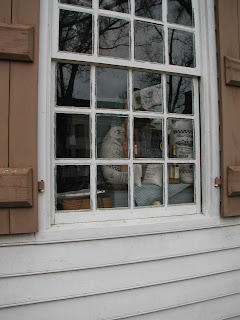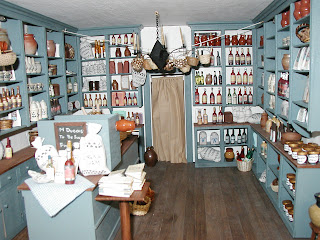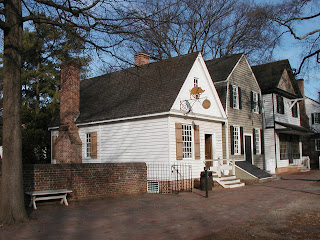
The last time I wrote on my blog I mentioned an old, forgotten project I had unearthed from under the bed. It is a half inch scale project and I have only done one other 1/2" roombox. Several ideas have come to mind about the decorating of this three room villa (for lack of a better name for the project). One thing I definitely wanted was lighting so I ordered several lights from Hobby Builders Supply and what a surprise the lights were!! Tom and I have wired a lot of dollhouses, but neither of us was prepared for the 1/2" scale wiring. The lights are tiny of course and we were suprised to find tiny packages which contained the bulbs. Our first order of business was to test the lights and to our surprise, none would light on our test board. We found a grain of wheat bulb which tested fine....it lit up like it is supposed to do. Now we started to wonder what we were doing wrong. I picked up one of the lights and said to Tom, "This doesn't appear to have a bulb!" Then we decided to take a second look at the 'extra' bulbs. They were in fact supposed to be inserted into the 1/2" lights and we were astonished at how that was to be accomplishsed. The bulbs had two tiny prongs or legs at the bottom and those were to be installed in a tiny circle with two very tiny dots located on each light. If you know how tiny 1/2" can be, then you can imagine how very tiny the lights are. This procedure is tedious and difficult. Don't try it without a large lighted, magnifier on your work desk. I did the first bulb and it worked, but the second was not so easy. Tom said to let him try and I happily did that. He finished the others, but lost one bulb which we could not find. I had to call HBS to order a replacement. We also discovered that the bulbs are different....two different sizes and with different tops; one with a flame top and the other squared off. To me, there seems to be no sense in having the bulbs so different. Houseworks makes the lights we are using so perhaps I should write a complaint letter. What do you think?
I started this post with a picture of my little villa. The furniture needs to be painted or stained and covers will be made for the upholstered pieces. Most of what I am using is part of a set that HBS sells. It is a kit that one puts together and so far I have found most of it to be satisfactory. I guess I will reserve total judgement until I am farther along with the decorating. I have a lot left to do after I finish the wiring. One other thing I have discovered concerning the lights...If I solder the connections as I have always done on lighting, then it will be totally impossible to replace a light bulb because one could never get to the lights unless the tiny plugs are used for installation. I hope I have made this clear. If anyone reading this has experience with 1/2" scale wiring, I would love to hear some suggestions; am sure we are missing a lot of valuable information. My email is available so let me know what you think.

















































